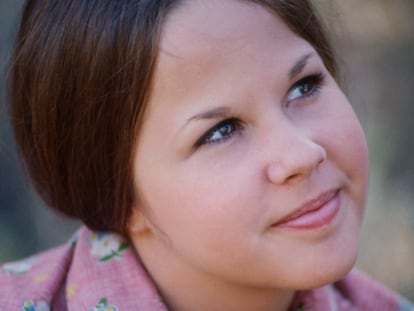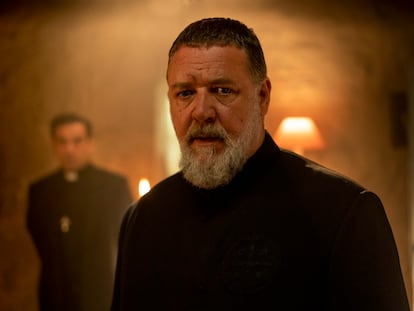Stairway to Hell: 50 years of ‘The Exorcist’
One of the most influential horror films of all time, released on December 26, 1973, is also one of the darkest portraits of Washington, D.C.
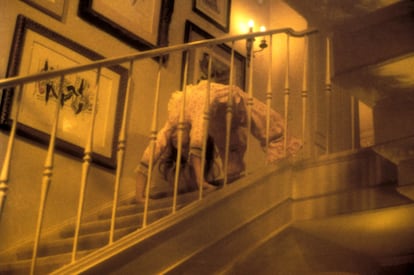

Georgetown University, the oldest Catholic and Jesuit college in the U.S., issued a circular to its students in the fall of 1972: “Extras Wanted for The Exorcist. Saturday, October 14. Marriott Motel-Key Bridge. 1:00-2:00 p.m. Monroe Suite. 3rd Floor.” Three hundred students ended up as extras in a film whose impact on popular culture was unprecedented. While few in Hollywood seemed convinced by the idea of the film, William Friedkin’s The Exorcist is still considered one of the most disturbing horror films of all time 50 years after its release on December 26, 1973.
Traces of The Exorcist are still very much in evidence in Georgetown. The cinematic iconography of the U.S. capital is overshadowed by the omnipresence of the White House, but specifically in the neighborhood of Georgetown where it was shot, there are cinematic landmarks such as the streets walked by the characters of Alan J. Pakula’s 1976 All the President’s Men and the favorite pub of the friends in St. Elmo’s Fire, Joel Schumacher’s 1980s teen classic. But the only stairs that can compete with those of the Lincoln Memorial are the grim 75 steps that connect 36th street and Prospect to M. Street. A commemorative plaque placed in 2015 points out that those are “the iconic stairs from The Exorcist” down which Father Karras “plunged to his death.”
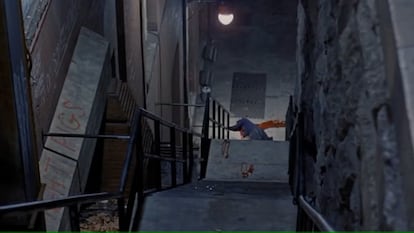
In Georgetown, shortly before Christmas, almost a dozen onlookers gathered at the stairway. Peruvian Willy Revilla has been in town for 21 years and every time a family member comes to visit he brings them here. “Before, the steps were marked with the blows made by Father Karras’ fall, but these have been erased with time. Now it’s more neglected,” he says. The staircase is used by people looking to keep fit and by Exorcist fans who still score Exorcist words and symbols between each step.
Built in 1895, the staircase is awe-inspiring, but not only because it’s steep. There is something remote and dark about it. In the panoramic view of Georgetown in The Exorcist, it looms menacingly. The skeptical detective Kinderman, played by Lee J. Cobb, examines it. Narrow and hidden, it looks like it could lead to Hell, encouraging visitors to hold tightly to the rail.
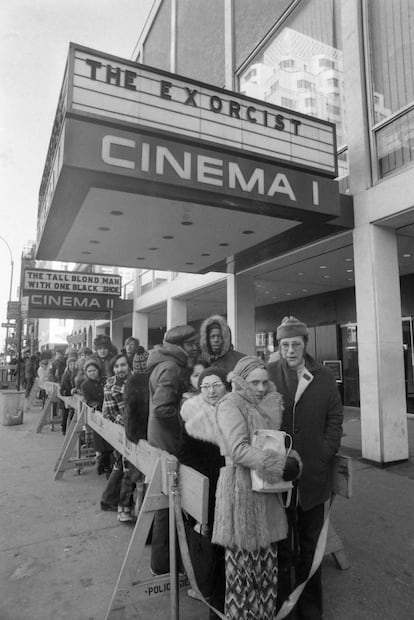
Antonio Ayala, a Salvadoran who has lived in the U.S. for 23 years, has come to see the stairs with his cousin, Cecilia Fernández. “I’ve been traumatized by this film since I was eight years old,” says Cecilia. “After I saw it, I spent some time sleeping with the Bible on my chest and the light on.” In the upper reaches of the staircase, where metal railings have been installed, you can see the windows of the house where Chris MacNeil and her daughter Regan, played by Ellen Burstyn and Linda Blair respectively, lived. “I worked on installing the new windows. The current owners changed them,” Ayala says. The metal fence that surrounded the house has also been replaced by a wooden one and a few meters away, in another house on Prospect Street, there are two giant sculptures that reproduce the robots from the Transformers saga, two giant statues put there during the pandemic to become yet another tourist attraction that outrages a number of this distinguished neighborhood’s residents.
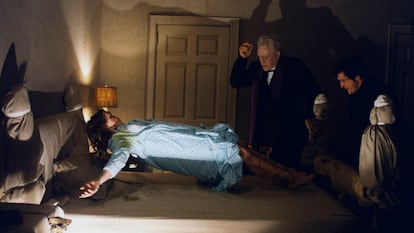
When The Exorcist began filming in 1972, Georgetown students were aware of its backstory. The film was based on the novel of the same name written by a former student, William Peter Blatty, who, a year before graduating, gathered information about the alleged exorcism of a 14-year-old boy in nearby Cottage City, Maryland in 1949. The details of that event have been questioned after the parish priest William Bowdern downplayed the paranormal aspect of the event as he felt it had been exaggerated by his two assistants and by his own suggestion. According to Bowdern, the most striking thing was a flying consecrated host. The rest involved spitting, the child repeating the Latin word dominus and, yes, wounds on the child’s skin on which at times the word Hell could be read.
Blatty published The Exorcist in 1971. He wrote the novel after gathering inspiration from Roman Polanski’s Rosemary’s Baby (1968). The 14-year-old boy ended up as the fictitious Regan MacNeil, the daughter of a famous Hollywood actress who for a few months moves with her mother and her entourage to a house in Georgetown for the filming of her new movie.

Shortly after publishing his bestseller, Blatty was already on board as screenwriter and producer of this record-breaking piece of horror, but his involvement meant the making of the film was dogged by tension, often between Friedkin, an agnostic Jew who cared little for theology, and Blatty, a Catholic who cared greatly about the religious debate. The director settled the matter with “this is not an advertisement for the Church” and, years later, in 2000, Blatty would release The Exorcist III, a failed attempt to bring his Catholic imaginary to the story. It was not the only sequel. There is also the almost comical The Exorcist: Believer, directed by David Gordon Green and released a couple of months ago.
Back in 1973, The Exorcist was released in only 24 theaters in the U.S., as the cast seemed lackluster and Warner studios had little faith in it. Ellen Burstyn and Max von Sydow were not considered famous enough to pull an audience in. Linda Blair was an unknown and Jason Miller, who played father Karras, was a playwright without much experience as an actor. But then there was the audience’s reaction to the film: vomiting and fainting spells, prompting some theaters to set up a permanent help desk. The critics were divided, and so was the Church. The image of a girl masturbating with a crucifix was not, so to speak, very Catholic. Meanwhile, the audience grew.
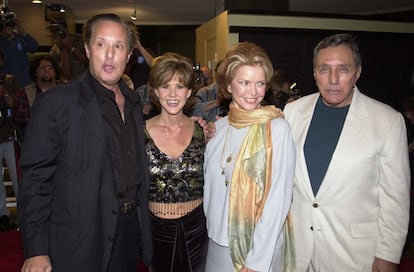
Other events during its filming seemed to suggest that the movie was cursed. A fire destroyed the set several times and delayed the shoot for weeks. The budget doubled. An experienced carpenter working on the set lost the fingers on one hand, and actor Jack MacGowan, who played Burke Dennings, the first victim of Georgetown’s staircase, died in his sleep shortly after finishing his part in the film.
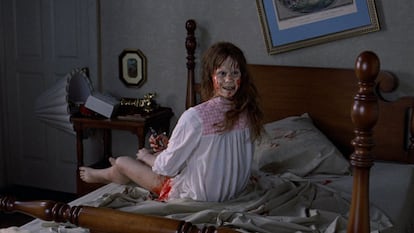
But the myths surrounding The Exorcist have not detracted from the fact that it remains a fascinating and terrifying film. Nobody is calling out the pea purée or the dirty satanic words in the mouth of a little girl anymore. It is an icon of popular culture sustained by ancestral fears, but also by the drama of a single mother faced with the maddening personality changes of a prepubescent daughter. Theirs is a relationship tinged with absence and guilt, in which a woman engrossed in her career ends up becoming a courageous mother who calls on all the men of Washington, D.C. — a symbol of power in itself — who are unable to help her. And then there is Father Karras, in a cassock, having a crisis of faith. A young, attractive and tormented priest rushing down Satan’s staircase.
Sign up for our weekly newsletter to get more English-language news coverage from EL PAÍS USA Edition
Tu suscripción se está usando en otro dispositivo
¿Quieres añadir otro usuario a tu suscripción?
Si continúas leyendo en este dispositivo, no se podrá leer en el otro.
FlechaTu suscripción se está usando en otro dispositivo y solo puedes acceder a EL PAÍS desde un dispositivo a la vez.
Si quieres compartir tu cuenta, cambia tu suscripción a la modalidad Premium, así podrás añadir otro usuario. Cada uno accederá con su propia cuenta de email, lo que os permitirá personalizar vuestra experiencia en EL PAÍS.
¿Tienes una suscripción de empresa? Accede aquí para contratar más cuentas.
En el caso de no saber quién está usando tu cuenta, te recomendamos cambiar tu contraseña aquí.
Si decides continuar compartiendo tu cuenta, este mensaje se mostrará en tu dispositivo y en el de la otra persona que está usando tu cuenta de forma indefinida, afectando a tu experiencia de lectura. Puedes consultar aquí los términos y condiciones de la suscripción digital.
More information
Archived In
Últimas noticias
The new victims of the Republican war on Obamacare: Millions hit by soaring health insurance premiums
A country divided on migrant rights: Some US states expand protections while others restrict them
Venezuela authorizes the release of another 87 political prisoners
There is as much life left to discover on planet Earth as that which is already known
Most viewed
- David King, chemist: ‘There are scientists studying how to cool the planet; nobody should stop these experiments from happening’
- Reinhard Genzel, Nobel laureate in physics: ‘One-minute videos will never give you the truth’
- Oona Chaplin: ‘I told James Cameron that I was living in a treehouse and starting a permaculture project with a friend’
- Sinaloa Cartel war is taking its toll on Los Chapitos
- The Interoceanic Train, the Mexican alternative to the Panama Canal
